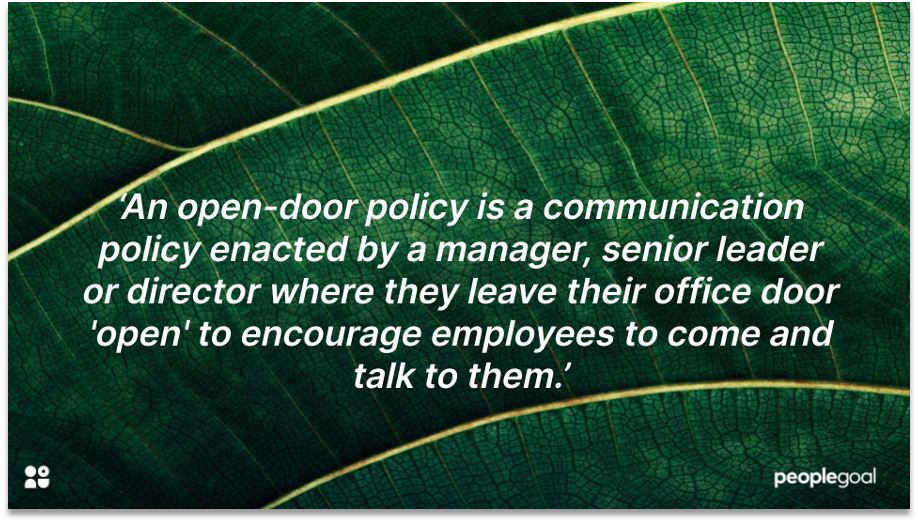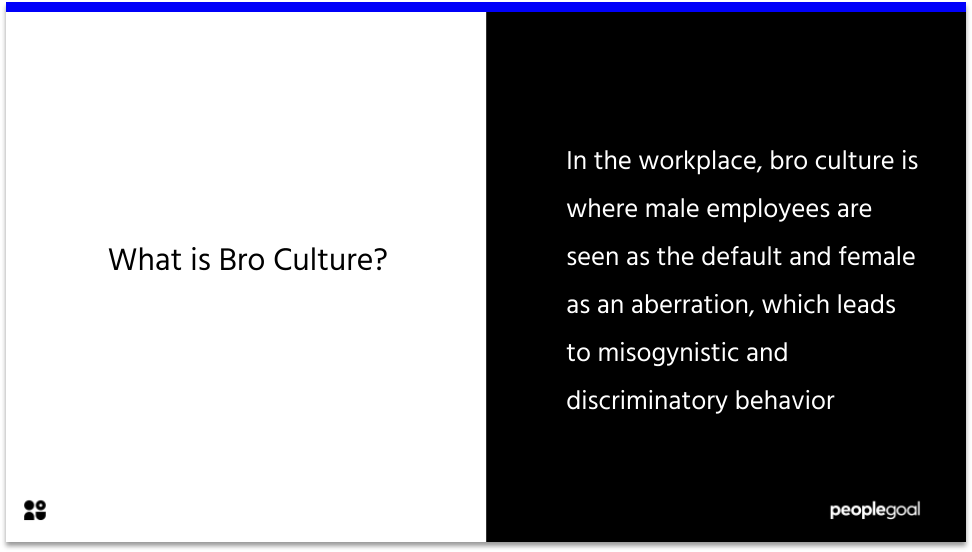An inclusive workplace is a place where any employee can do their best work. Diversity, Equity and Inclusion are the fundamental pillars to safeguarding the mental health of employees. Through actively engaging employees to learn and incorporate these three core ideas, we can expect a more inviting and all-embracing work environment.
A sense of belonging is crucial for any individual to feel secure in the workplace. Therefore, by proactively encouraging employees to follow some of the activities given below, you can expect to see positive results for establishing a more inclusive workplace. Demonstrating a commitment to diversity and inclusion will generate a better employee experience of your company culture.
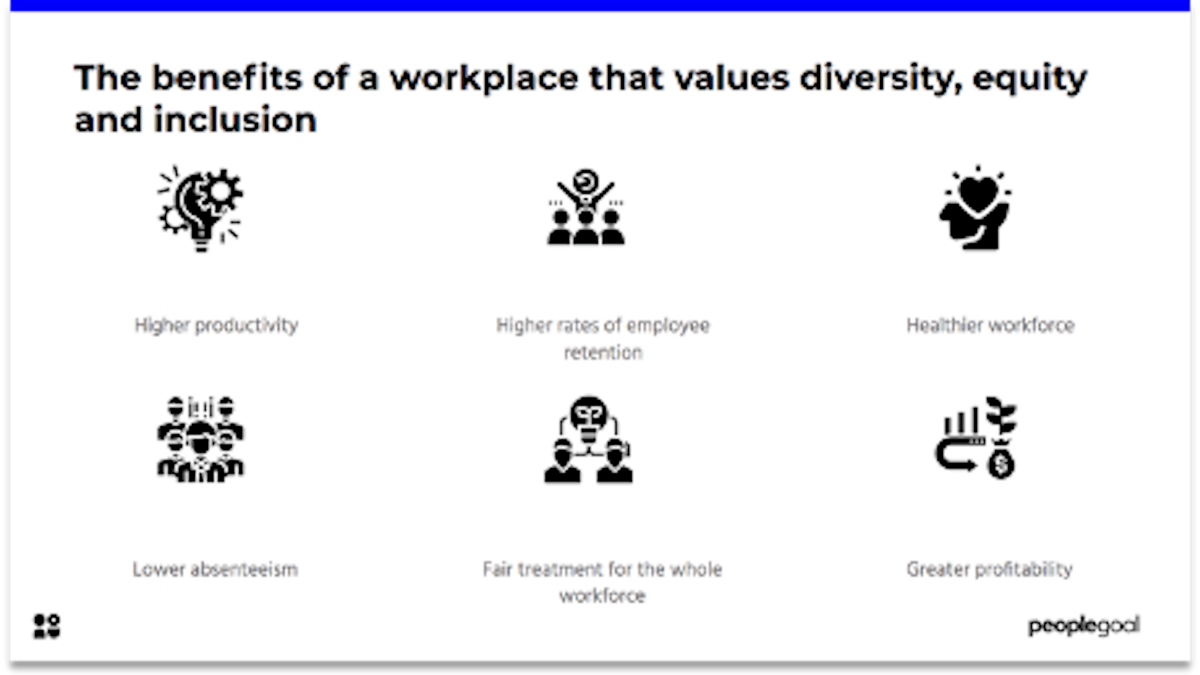
Defining Diversity, Equity and Inclusion
Diversity
The concept of diversity) encompasses acceptance and respect. It means understanding that each individual is unique and recognizes our differences.
Our differences can be found in various dimensions, from race, religion, ethnicity, gender, sexual orientation, socio-economic status, age, physical abilities, beliefs, or other ideologies.
It is about understanding each other and moving beyond simple tolerance to embracing and celebrating the numerous dimensions of diversity contained within each individual.
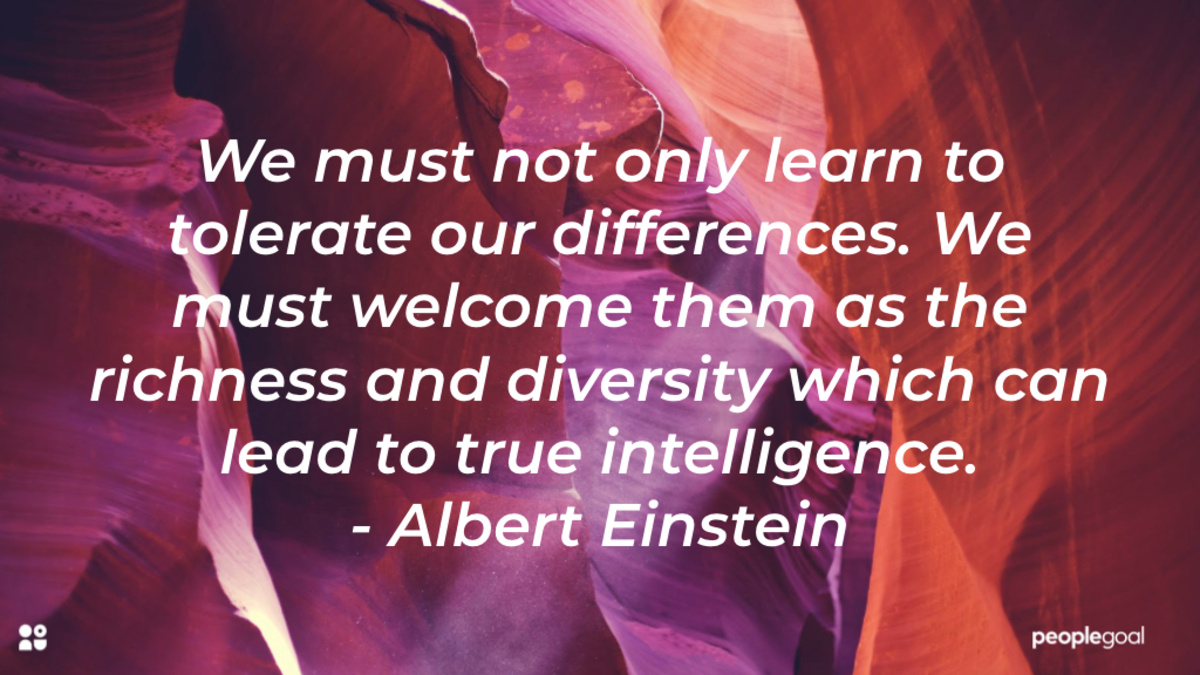
Equity
Equity is the fair treatment, access, opportunity, and advancement for all people. At the same time, it is striving to identify and eliminate barriers that have prevented the full participation of some groups.
Improving equity is realized through increasing justice and fairness within the procedures of institutions or systems, as well as in their distribution of resources. To tackle issues with equity, there must be an understanding of the root causes of resultant disparities within society.
In the workplace, this means that everyone must receive fair treatment. When equity exists, people have equal access to opportunities. It sets up an advantageous environment for both the employees and the employer.
Inclusion
Inclusion is the act of creating environments in which any individual or group can be or feel welcomed, respected, supported, and valued to fully participate. An inclusive and welcoming environment goes beyond recognition, it must demonstrate that it embraces differences and respects all people.
Communication is fundamental to establishing an inclusive work environment. Inclusion makes sure that all employees are full team members and that they feel their contributions are valued.
Actions speak louder than words. In this way, there must be a tangible effort between employees and employers to ensure that all members of the team are considered. Giving every voice full representation in discussions and other matters.
Enacting Diversity, Equity and Inclusion
As demonstrated by these definitions, an inclusive culture in a diverse workplace will enable the most productive and positive experience for all team members. Whilst organizations can invest in thorough diversity training, there are plenty of micro-adjustments and activities that can incite positive change and educate employees. It is important to raise awareness of the harms that can be caused by ignorant or discriminatory behavior.
There is a shared responsibility for all individuals in an organization, not just human resources, to ensure that these concepts are actualized. The activities presented below provide a few examples of systems that can be incorporated into daily practices. There are also some exercises that can be carried out within a team to ensure a better understanding of diversity, equity, and inclusion in the workplace.
Diverse teams are best equipped to handle a whole range of tasks and challenges. An inclusive workforce are most able to take these results and build a successful company culture using this diverse talent. Employee retention is strongly linked to the success of a business and a positive employee experience. As a result, the most diverse companies will most often have the highest rates of employee retention.
When we do not actively include, we actively exclude – L. Talusan
Practices for ensuring that diversity, equity and inclusion are respected in the workplace
Here are two practices that encourage D&I in the workplace. The message from each practice prompts employees and employers to consider subtle but effective adjustments to how they engage in the workplace. Through developing an understanding of the ramifications of following these practices, it becomes evident how beneficial it can be to incorporate diversity, equity and inclusion in the workplace.
Change perceptions of Diversity and Inclusion
There is a lot of emphasis on the notion of promoting a diverse workforce. Of course whilst celebrating our differences is important we should not forget that we are all united by our collective goals. All members of a team must be aiming for the same goal or else it becomes incredibly difficult to score. In this way, there is a need to shift the perspectives of diversity from looking at our differences to encouraging ways of recognizing our togetherness.
The most successful teams are able to collaborate in a respectful and decisive manner. By truly welcoming all members to participate, this provides a medium for a diverse range of perspectives to be shared and included when solving problems or making decisions.
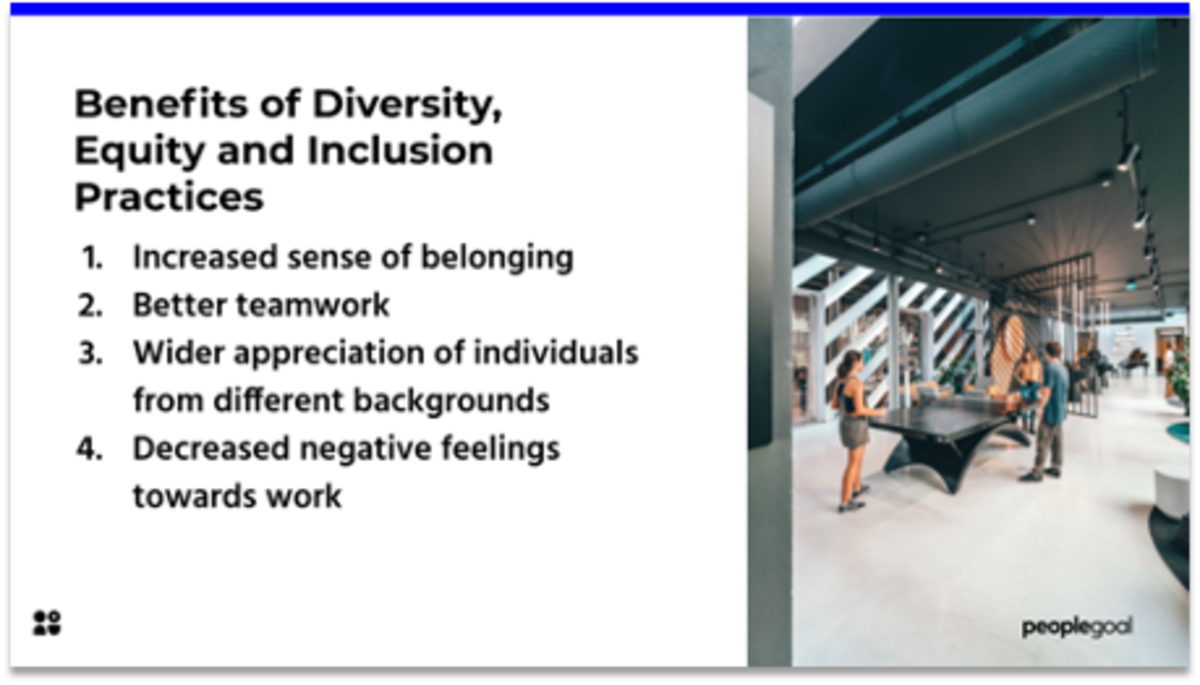
Establish an interruption-free culture
Across industries, women report being frequently interrupted when they speak in meetings.
On a wider level, it is very common when one group feels empowered to drive the conversation. This results in excluding particular individuals or groups, which can drive divisions between teams. Furthermore, this hinders equal opportunities in the workplace. There must be an awareness that all employees have a right to voice their opinions.
When an employee feels unvalued or disregarded by their colleagues, this can lead them to disengage from their work. As a result, there must be an understanding that each employee deserves respect from their coworkers.
Anyone should be able to speak without being interrupted or spoken over. For individuals in an overpowering group, it is often difficult to recognize that this is happening. By establishing this rule it opens up the conversation – including all team members.
Raising awareness and reinforcing this with actions that counteract exclusionary behavior is the best solution to preventing employees from feeling alienated at work. Beyond creating a culture that prevents interruptions, there is also great value in asking the opinions of people who haven’t spoken up. Every employee contributes to the workforce, all members of a team must act to reinforce an inclusive and welcoming environment.
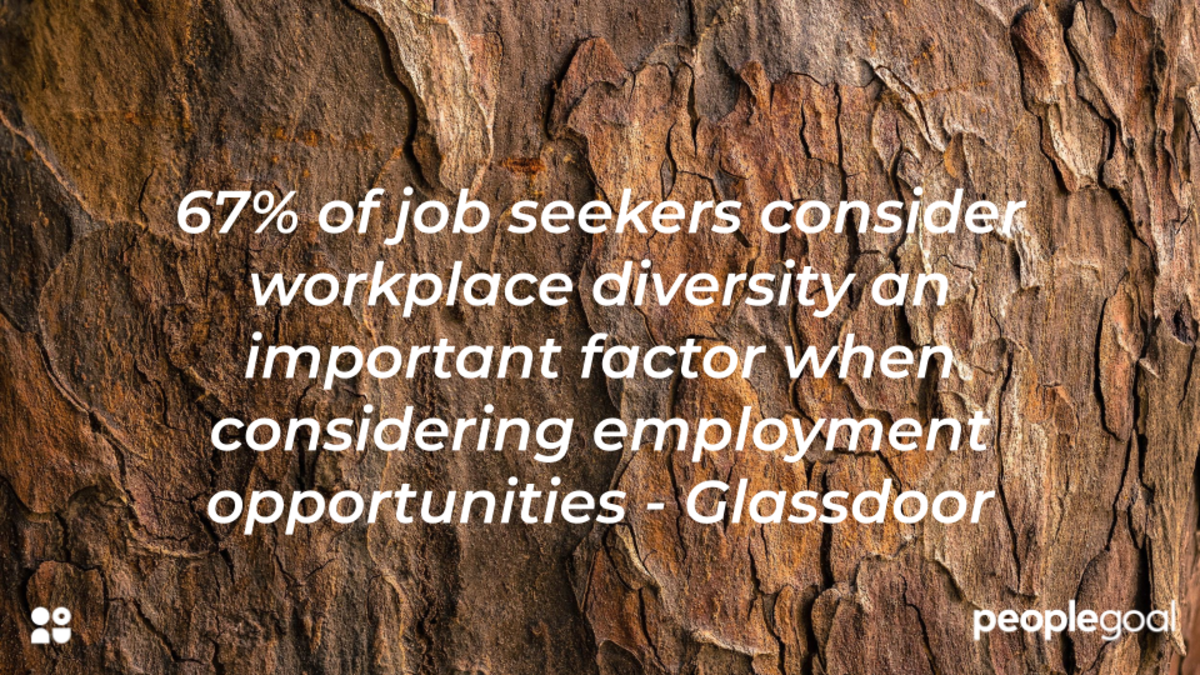
Activities to promote Diversity, Equity and Inclusion in the workplace
Here are a few examples of activities that can be introduced to teams to raise more awareness of the importance of valuing D&I in the workplace. These are more engaging methods to inform employees of the significance of respecting other colleagues’ feelings.
Step Apart, Step Together
The purpose of this activity is to demonstrate the differences and similarities between colleagues. Here’s how it works:
- Two team members go up in front of everyone else and face each other.
- These two team members are then instructed to move a step apart when they have a difference. Equally, when they have a similarity, they can step back together.
- The other team members can then call out things like eye color, shoe size, favorite vegetable, even religion. Anything which might signify that one person is different from the other. Keep playing until someone is out of the room or the participants are very much in each other’s personal space.
The lesson from this activity is that even if two people are quite different from each other, there are still many things which can bring them back together. For some, the gap might be wider but there will always be something which brings them back together.
(Please note: This activity will be more difficult to perform remotely. Although, you could be creative and use an interactive board, or even a map, to trace distances.)
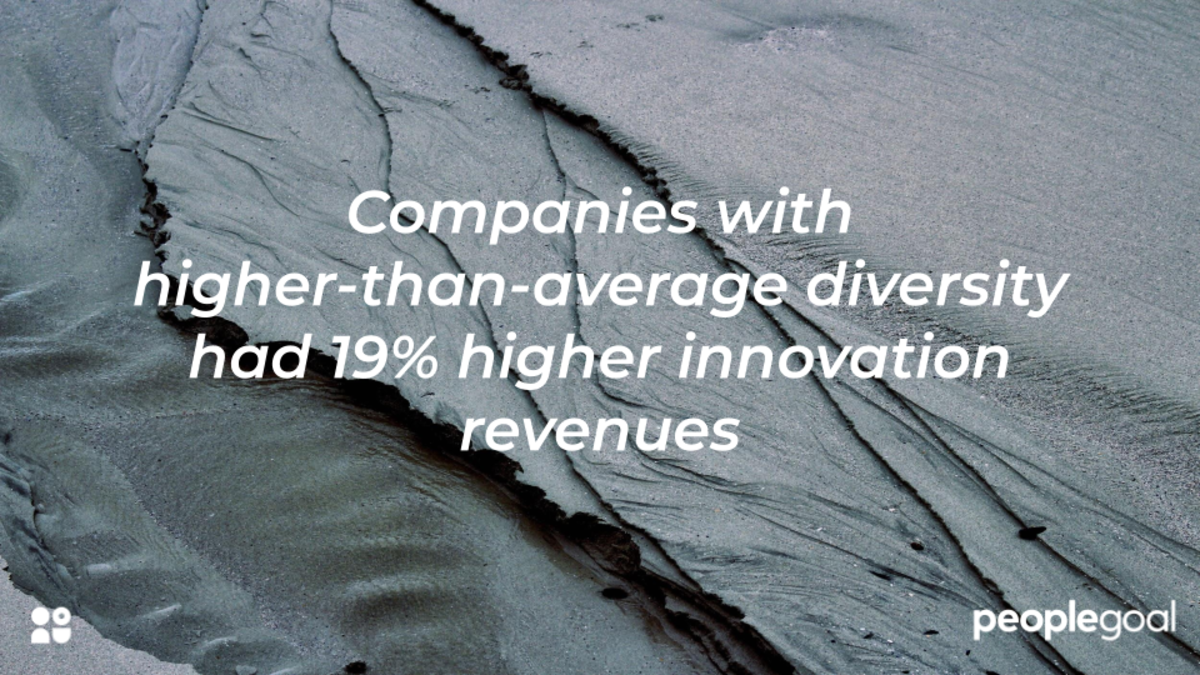
Name Stories
This activity involves asking participants to write a short story about their names, with the intention of each sharing their story with other employees. Participants can be as creative as they like, the activity is to be left open to interpretation. (You may want to ask employees to write these before the exercise to save time).
If it is necessary, break up employees into diverse small groups of about 4-5 people. This way each employee will have an opportunity to share their story with their group. It is important to allow everyone time to share.
After allowing each employee to share their story, ask participants how it felt to share their stories. Why this activity is important? What did they learn?
Encourage groups to discuss their thoughts and feelings with each other. Additionally, invite employees to ask questions. Through stimulating a conversation around the name stories and backgrounds of each employee this enables teams to develop more trust and respect for each other. By learning where someone has come from, this provides powerful insights as to how they then might approach their work, or other matters, in a professional setting.
The power to question is the basis of all human progress – Indira Gandhi
Six Degrees of Separation
As the old folklore tale goes, we are all connected to every person in the world by as few as six connections. Through this activity, employees are given the opportunity to uncover some of the common bonds they share with other team members. The outcome of this task is to demonstrate the underlying commonalities that exist between us. It should also strengthen communication between groups or individuals who may not have previously spoken very much.
To perform this activity:
- Invite employees to find a partner. They should look to partner with someone that they don’t know very well.
- With this partner, employees will begin a conversation and should look to establish 10 things that they have in common. Each employee then writes these 10 things down.
- After completing this list, these groups must split and employees should find a new partner.
- With the second partner, employees should use their lists to identify at least one item that they share in common.
- Then they break again and find a new partner.
- Repeat step 3 until each employee has identified five new people they have connections with.
Following the completion of this activity, bring the group together to discuss the experience. Prompt employees to share some of the connections that were made and if anyone was even surprised by the connections they made. It is also important to discuss whether anyone had difficulties finding connections and what that was like. Ask the group if anyone made assumptions about members of the group that affected how they chose partners.
Participants of this activity will learn more about each other and also the prejudices that might exist among them. From this, there can be a more open discussion on the verity of diversity, equity and inclusion. By demonstrating the various connections that exist between employees, it will encourage a more inviting and welcoming work environment. Ensure people feel included even if clear differences in genders, ages, ethnicities to promote higher rates of employee engagement.
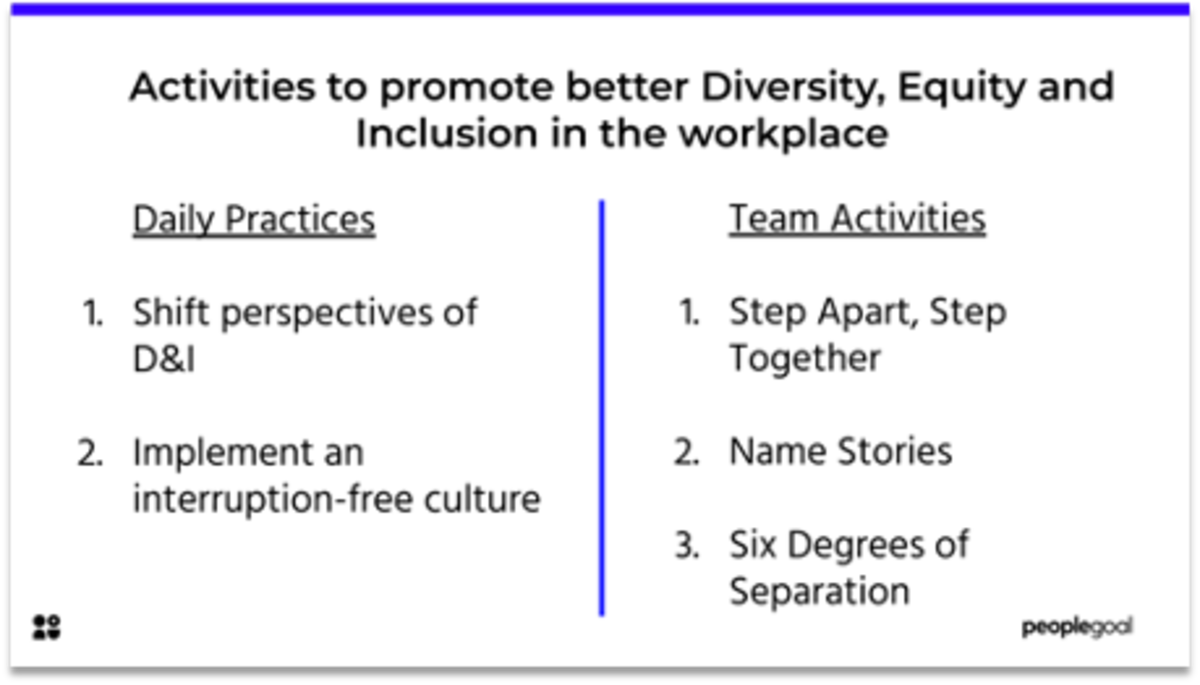
All in all, the practices and activities discussed above provide a handful of ideas that can bring teams together. The purpose of understanding diversity, equity and inclusion is to encourage better relationships in the workplace. Whilst also preventing any employees from feeling isolated or out of place at work. By making work a place where people feel that they belong, this contributes to more productive and more successful organizations, which is beneficial for everyone.
Ready to 3x Your Teams' Performance?
Use the best performance management software to align goals, track progress, and boost employee engagement.




